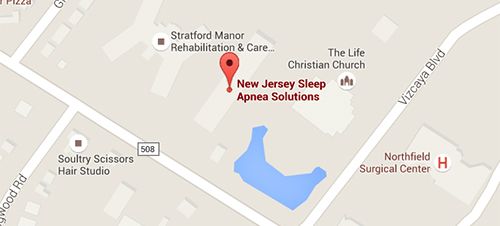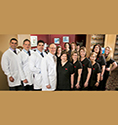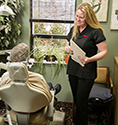Sleep Apnea on the Rise in the U.S.
Submitted by New Jersey Snoring Solutions on Tue 10/28/2014 - 09:57

It is official: Sleep apnea is on the rise in the United States. According to data published in the American Journal of Epidemiology, the approximated prevalence rates of obstructive sleep apnea (OSA) in the U.S. have increased significantly over the past two decades. This is most likely due to the rise in the incidence of obesity. An estimated 26 percent of individuals between the ages of 30 and 70 currently suffer from sleep apnea.
Although this information may seem disconcerting, there are several actions that can be taken to manage and even potentially reverse sleep apnea. Let’s explore the issue further.
What Is OSA?
OSA is a sleep disorder in which the sufferer temporarily stops breathing several times each night, for at least 10 seconds every hour while sleeping. The cessation of breathing occurs when the throat muscles relax, allowing the soft tissues in the back of the throat to collapse and block the air passageways. Often, the OSA sufferer will wake up choking or gasping for air. OSA bouts can occur hundreds of times a night, often leaving the sufferer groggy, confused, moody and unable to focus the next day.
OSA Symptoms
Many individuals with OSA may not even know they have the condition; often, a spouse, family member or roommate will be the first to witness the sufferer’s OSA bouts. By being aware of the common symptoms of OSA, loved ones can play a vital role in helping to identify sleep apnea.
Some of the common symptoms of sleep apnea include:
· Loud snoring
· Waking up with a dry or sore throat
· Morning headaches
· Waking up in the middle of the night with a gasping or choking sensation
· Lack of energy or severe sleepiness during the day
· Mood swings, inability to concentrate, forgetfulness
· Decreased interest in sex
The Increased Risk Factors for OSA
As mentioned above, being overweight puts individuals at an increased risk of developing OSA. Also, having a thicker neck circumference may also increase this risk. In addition, the following are factors that increase one’s risk of suffering from OSA:
· A narrow air passageway
· Being male
· Being older than 60 years old
· Family history
· Use of alcohol or sedatives
· Nasal congestion
· Smoking
Also, it should be noted that among patients under 35 years of age, OSA is more common in blacks.
Clearly, some of these factors can be controlled. Overweight individuals with OSA should try to lose the excess weight while smokers should stop smoking; doing so may resolve OSA.
In contrast, many of these risk factors are outside one’s control. When this is the case, it is especially crucial for sufferers of OSA to seek medical help to manage the condition. There are several treatment options for OSA, including the use of continuous positive airway pressure (CPAP) therapy. This is an effective treatment option that can also reverse any damage to the white matter of the brain that might occur as a result of a lack of oxygen due to OSA. However, CPAP therapy is only effective in this matter when performed continuously for at least one year.
What to Do If You Think You Have OSA
If you think you might have OSA, reach out to New Jersey Sleep Apnea Solutions for help. We offer CPAP therapy, as well as several other convenient treatment options to help OSA sufferers get a good night’s sleep.
To schedule an appointment with an OSA specialist, please contact New Jersey Sleep Apnea Solutions by calling (855) 949-7667 now.







